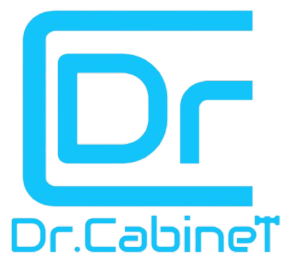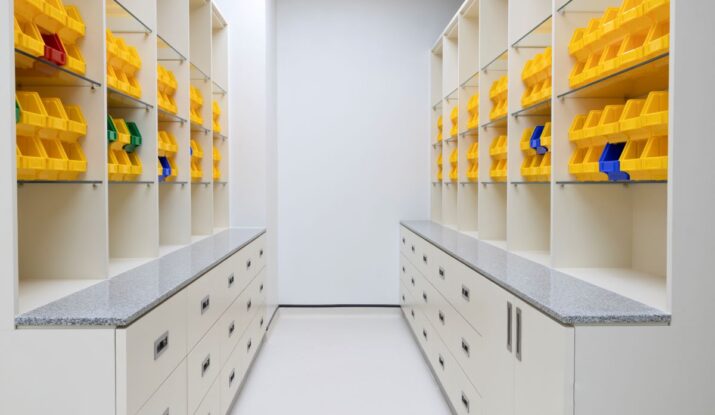Operating a healthcare institution is not simple. Every aspect counts, particularly when it comes to storage. A good medical storage cabinet is vital for supply security, accessibility, and organization. The correct storage option can affect efficiency and patient care.
The Importance of Correct Medical Storage
Imagine a nurse searching for an emergency medication through disorganized shelves. Or a surgeon looking for a certain instrument lost in a packed cabinet. These situations can affect patient safety as well as aggravation.
A well-designed medical storage cabinet helps to:
- Maintain supply organization; no more time lost looking for things.
- Keep everything clean; good storage lowers pollution chances.
- Locking cabinets safeguard drugs and costly equipment.
- Staff members can work quickly and more effectively if everything is easy to find.
The Hidden Costs of Poor Medical Storage
That wobbly old cabinet might be costing more than you think:
- Time Waste: Staff spend ~15 mins/shift searching for supplies (adds up to 130 hrs/year per employee!).
- Expired Inventory: Unorganized cabinets lead to overlooked expired meds—average facility loses $15K annually this way.
- Cross-Contamination Risks: Crowded shelves increase accidental contact between sterile/non-sterile items.
Fix: Track “search time” for a week—if it exceeds 5 mins/day, your storage needs an upgrade.
Selecting the Appropriate Medical Storage Cabinet
Some upper and base cabinets are better than others. Your particular requirements will determine the best one for your company. Some typical kinds are below:
- Wall-mounted cabinets:
- Excellent for conserving floor space. They maintain easy access to daily items.
- Ideal for shared spaces or emergency rooms.
- Essential for
- securely storing regulated drugs
- precious equipment, locking steel cabinets.
- Perfect for sterile settings like operating rooms. Clanliness is very important for stainless steel medical cabinets.
Consider what you’re keeping, and how easily it gets accessed. Also, see whether security is a worry. A big hospital may need both stationary and mobile equipment. A small clinic could only need basic wall cabinets.
Custom vs. Off-the-Shelf: Which Wins?
Custom makes sense when:
- Your facility has unusual wall angles or space constraints.
- You need combo storage (e.g., refrigerated + locked narcotics).
Off-the-shelf works for:
- Standard supply rooms with common layouts.
- Budget-conscious projects (40–60% cheaper than custom).
Pro Tip: Many “modular” systems now offer custom flexibility at near off-the-shelf prices.
How Good Storage Solutions Enhance Healthcare Environments
A well-run medical institution affects patient treatment directly. This is how:
- When supplies are easier to access, staff can act fast in situations.
- Improved inventory tracking: No more missing equipment or expired drugs.
- A clean workplace increases efficiency and staff morale, thereby lowering stress.
- Improved safety: Appropriate storage, such as cabinets and drawers, protects limited objects. It helps reduce contamination possibilities.
The selection of a correct medical storage cabinet in the market results in more seamless inventory management.
The Psychology of Efficient Medical Storage
Ever notice how frustrated staff get when they can’t find supplies? There’s science behind it:
- Cognitive Load: Well-labeled cabinets reduce mental effort during emergencies (think color-coded trauma bays).
- Muscle Memory: Consistently organized shelves let staff grab items without looking—critical during codes.
- Stress Reduction: A 2023 study found nurses in organized storage environments made 28% fewer medication errors.
Tip: Involve your team in designing layouts—they’ll intuitively group items by urgency and frequency.
Smart Storage Solution for Healthcare Facilities
Careful placement guarantees:
- Supplies should be close to where they are most required.
- Group comparable things together (e.g., bandages in one area, drugs in another).
- Some drugs and equipment call for locked or specialised storage.
- A well-planned storage system ensures everything runs well.
Disaster-Proofing Your Medical Storage
When power fails or floods hit, your cabinets should protect supplies:
- Water-Resistant Seals: For flood-prone areas (basement storage rooms).
- Emergency Access: Backup manual locks for electronic systems during outages.
- Earthquake Straps: Anchor heavy cabinets in seismic zones to prevent toppling.
Real Example: A California hospital avoided $200K in lost meds during a quake by using latched, strapped stainless steel units.
Green Storage Solutions for Healthcare
Sustainability meets compliance:
- Bamboo Cabinets: Surprisingly durable for non-sterile areas (antibacterial, renewable).
- UV-C Sanitizing Drawers: Reduce chemical disinfectant use.
- Recycled Steel Units: With the same germ-resistant properties as virgin steel.
Bonus: LEED-certified facilities may qualify for tax incentives using these options.
Advice on Putting the Ideal Storage System into Use
Want to increase your medical storage? To begin, consider this:
- Check your requirements:
- What things need safe storage?
- What supplies get the most regular usage?
- Select robust materials:
- Medical settings call for strong, simple-to-clean cabinets.
- Give security top priority; restricted drugs call for locking systems.
- Make the most of space by using flexible shelves and vertical storage to fit more without the mess.
The correct configuration will help you see a significant change in daily activities. It also helps to keep pace with changing workflows.
When to Repair vs. Replace Medical Cabinets
Signs it’s time for a change:
✅ Keep: Minor dents or loose hinges—easy fixes.
❌ Replace: Rust in sterile areas, broken locks, or shelves that can’t hold modern equipment.
Rule of Thumb: If repair costs exceed 40% of a new cabinet’s price, invest in an upgrade.
Voice-Activated & Smart Cabinets
The future is here:
- RFID Tracking: Automatically logs narcotic access (no more paper trails).
- Voice Search: “Hey Cabinet, locate the 10mg diazepam” saves gloved hands from touching surfaces.
- Weight Sensors: Alerts when stock runs low.
Ideal For: High-theft areas or facilities with frequent staff turnover.
Conclusion
A medical storage cabinet is quite important for healthcare efficiency. The correct medical supplies organizer ensures:
- patient safety
- staff efficiency
- supply security
Choosing the finest choice for your institution is an investment in improved care. You can get it through robust locking units or small wall cabinets.
Commonly Asked Questions
Q: What is the ideal material for a medical storage cabinet?
For sterile environments—like operating rooms—stainless steel is perfect. Powder-coated steel or laminate is great for general storage.
Must all medical supplies be kept in locked cabinets?
Though not for all medical supplies, locking cabinets are necessary. They help regulate drugs, narcotics, and high-value equipment to avoid theft or misuse.
How do I increase storage capacity?
Use very available space through modular shelving. Combine it with stackable bins and vertical storage set-ups. Searching for well-designed, long-lasting medical storage cabinets? Browse Dr. Cabinet for options customised to your need.




